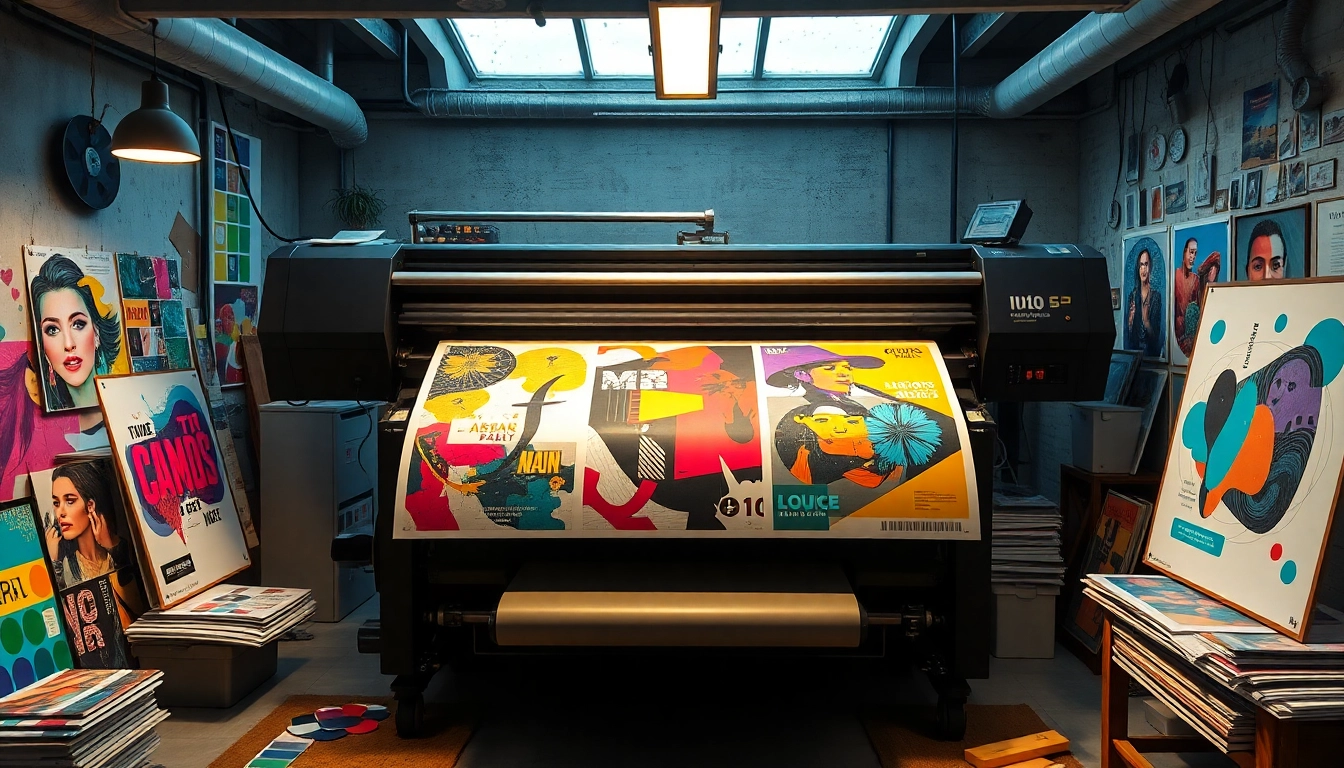Essential Poster Printing Tips for Stunning Visual Impact

Understanding Poster Printing Basics
What is Poster Printing?
Poster printing refers to the process of producing large-format prints, typically used for advertising, communication, or artistic purposes. It involves transferring graphic designs, images, or text onto various materials, allowing for vibrant visuals that capture attention. The technique employs a variety of printing methods, including digital and offset printing, enabling high-quality reproduction of intricate images and colors. As a medium for expression, poster printing plays a significant role in marketing, education, and public awareness campaigns.
Types of Materials Used in Poster Printing
Choosing the right material is crucial in achieving the desired poster quality and longevity. Common materials include:
- Paper: The most commonly used material, available in various weights and finishes including gloss, matte, and satin.
- Vinyl: A durable option ideal for indoor and outdoor use, resistant to moisture and tearing.
- Fabric: Offers a unique texture and is often used for displays at events and trade shows.
- Foam Board: Frequently used for presentations or displays, providing a sturdy backing.
Common Sizes for Effective Poster Printing
Posters come in standard sizes that facilitate their use across marketing platforms. The most common dimensions include:
- 24×36 inches: Ideal for impactful advertising.
- 18×24 inches: Suitable for classroom or event announcements.
- 11×17 inches: Perfect for smaller applications like flyers or handouts.
Designing Your Poster for Maximum Impact
Color Theory in Poster Printing
Color choice is pivotal in poster design, influencing emotions and perceptions. Understanding the psychological impact of colors can help convey the right message:
- Red: Energy and urgency.
- Blue: Trust and professionalism.
- Green: Growth and tranquility.
Utilizing color palettes strategically can enhance visual appeal and ensure that your poster stands out.
Creating Eye-Catching Graphics
High-quality graphics are essential for capturing attention. Utilizing tools like Adobe Illustrator or Canva allows designers to create visually appealing images that attract viewers. Consider the following tips:
- Use high-resolution images to avoid pixelation.
- Incorporate contrasting colors to enhance visibility.
- Apply white space effectively to avoid clutter.
Typography Best Practices for Poster Printing
Typography significantly impacts poster readability and overall design. Here are some effective typography practices:
- Font Selection: Choose clear, legible fonts that align with your message.
- Size Hierarchy: Utilize varying font sizes to emphasize important information.
- Alignment: Ensure text is well-aligned to create a cohesive look.
Choosing the Right Printing Services
How to Compare Poster Printing Options
When selecting a printing service, consider factors such as cost, quality, and turnaround time. Obtain samples to evaluate print quality and discuss color fidelity and material choices. Online reviews can also provide insight into the company’s reputation.
Considering Eco-Friendly Poster Printing Materials
With growing environmental awareness, eco-friendly printing materials are becoming prevalent. Options include:
- Recycled Paper: Reduces waste and supports sustainability.
- Vegetable-Based Inks: More environmentally friendly than traditional inks.
Understanding Turnaround Times in Poster Printing
Turnaround time is crucial, especially for time-sensitive projects. Understand the average processing times based on the service provider and factor in shipping when planning your project timelines.
Common Challenges in Poster Printing and Solutions
Dealing with Low Quality Images
Using low-resolution images results in pixelation and poor print quality. Always utilize high-resolution images—ideally at least 300 DPI—for best results. Tools like image editing software can enhance image quality before printing.
Avoiding Color Mismatch Issues
Color mismatch can occur when printed colors deviate from digital designs. Use standard color models like CMYK for print to ensure color accuracy. Request proofs before final printing to verify color fidelity.
Managing Budget Constraints for Poster Printing
Poster printing expenses can add up, especially for large quantities. To manage costs:
- Compare prices among various printing services.
- Consider bulk printing discounts for larger orders.
- Evaluate material options to balance quality and cost.
Measuring Success After Poster Printing
Analyzing Engagement from Print Campaigns
Success metrics for posters include tracking audience engagement and response rates. Utilize tools to analyze foot traffic or digital engagement metrics if your posters link to online content.
Gathering Customer Feedback on Posters
Post-campaign evaluations are vital. Collect feedback on poster visibility and impact, allowing for informed adjustments in future designs.
Tracking the ROI of Your Poster Printing Initiatives
Calculating return on investment (ROI) involves comparing the cost of printing against the revenue generated from the campaign, providing valuable insights for future poster initiatives. Document results meticulously to inform future strategies.





